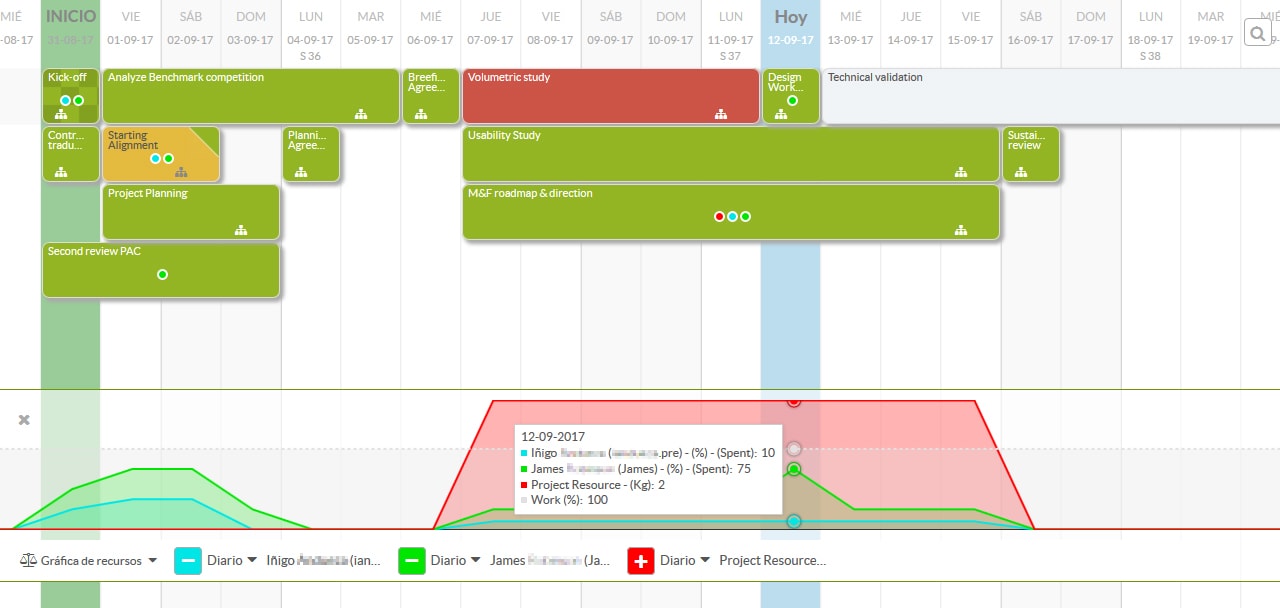How to stop overspending in projects?
How to stop overspending in projects is a question that project managers may often ask themselves – overspending in projects is usually a sign that there is some type of problem with the way projects are being handled.

While efforts should be made to avoid this type of situation, it is known to happen at times, things like external variables can affect whether or not a project manager can keep the budget within the desired constraints. This means that the factors that affect the budget can sometimes be unavoidable or controllable meaning that it may be unavoidable.
Despite this, there are a large number of things you can do to prevent it from happening; provided an external variable does not push things over the budget, there’s generally a method or solution for how to reduce spending, and avoiding an overspent budget.
In short, you should do everything you can to avoid ending up with an overspent budget in projects. Sinnaps, project management software, can be very effective for this as it’s an intuitive and easy to use project management tool that will let you effectively keep track of everything, allowing you to avoid overspending in projects and keep everything under control when it comes to resource management.
Sinnaps Resource Graph
Control the consumption and availability of your resources

Not spending money
Knowing how to control budget in project management can go a long way when done correctly, not spending money means to avoid paying or spending unnecessary money and therefore reduce your spending overall. This will help you to stay in the line with budget when applied throughout the project’s lifespan, ways to do this include:
- Determination of resource cost rates: People working on the project all work at specific rates. Any material used to build the project will also be charged at a specific rate. Figuring the cost for what the labour and materials used will be is a crucial step in not spending too much.
- Vendor and reserve analysis: Sometimes work must be done with external contractors to complete the project, in this situation make sure you evaluate and choose correctly when it comes to vendors. Reserve means to set aside money to accommodate for additional costs, if you understand that the project has a risk of unexpected costs turning up, set aside money to ensure that you do not get caught out by this potential problem.
- Quality Cost: When making an attempt to avoid spending too much money, you need to ensure that you are not compromising quality in the process. When undertaking a project you should aim to do it right from start to finish to avoid dealing with problems that may cost you more later on as opposed to getting the right quality of workers/resources the first time.
Sinnaps can work excellently with carrying out each of these, as communication between people assigned to the project and even others outside of the project (external) can be done using sinnaps.
Is my team overloaded with work? Have I budgeted for the project correctly? Sinnaps gives us an answer thank to the resource consumption graph. Let’s take a look (3 min…) 😉
Related links…
Free Project Management Templates
How to control spending money
How to control spending money is a question that comes into many project manager’s minds. There are many methods for how to control budget, and for maximum efficiency you should seek to implement as many of these strategies as possible to avoid wasting money.
Correct estimation at the start is crucial for setting the correct expectation at the start, therefore it is ideal to take care of this before even starting the project. Create a realistic estimate with your team, and ensure that it covers all the project’s phases and activities alongside sufficient contingency. Other methods that can be used include:
- Achieve a baseline budget – ensure that the estimate is signed off formally to get the actual funds allocated to the project
- Establish monthly budget – decide what you expect monthly running costs to be and document it within a spreadsheet encompassing the entire project
- Establish cost control – set up clear cost controls and make sure that each type of expenditure is considered. Consider who will be approving and signing off on timesheets, materials, hardware and the like. This is considerably important in relation to the entire project as this will be where you control spending money limits booked to your project.
- Record the actual costs – check the actual amount of money being used on your project at the end of each month, normally this will be provided to you by the finance department. Record this in the aforementioned spreadsheet so you can compare it with your budget.
- Calculate the metrics – calculate and update the cost metrics at the end of each reporting period to measure the money that the project has spent out of the total budget compared to how much money you were predicting to have spent at that current point in time. Include your metrics in reports.
- Update forecasts – Adjust your forecasts monthly to accommodate and take measures for any changes that may have taken place, such as actual running costs being higher or lower than your forecast or your estimates being higher or lower than your forecast.
In conclusion there’s many things you can do to manage your budget for a project. It needs to be understood that some things simply may be out of your control when it comes to the project’s costs but provided everything external goes according to your plan, when armed with the information in this article, there’s no reason you can make sure things stay within your budget.
Sinnaps only makes carrying out this task easier, as it provides you with an intuitive user interface to ensure that you can keep things working well and properly manage them.
FREE ONLINE PROJECT MANAGEMENT COURSE
You will receive 5 lessons over the course of 15 days.


